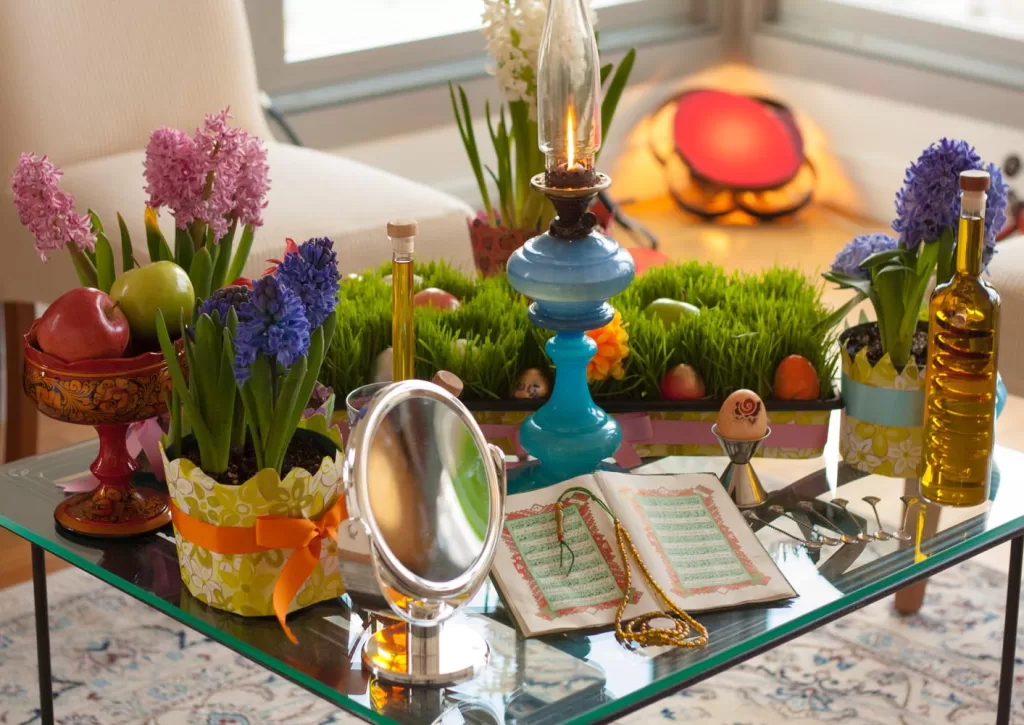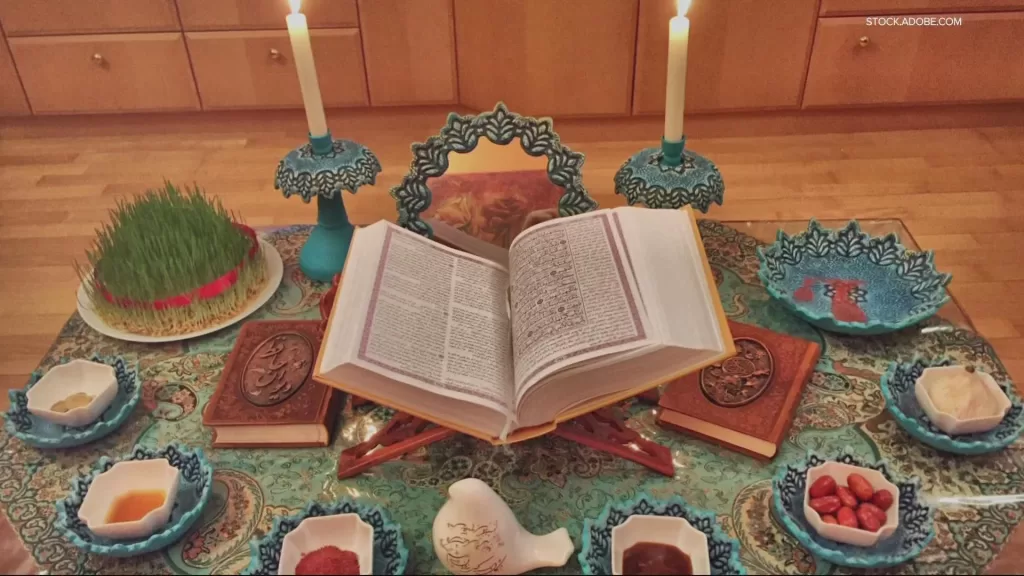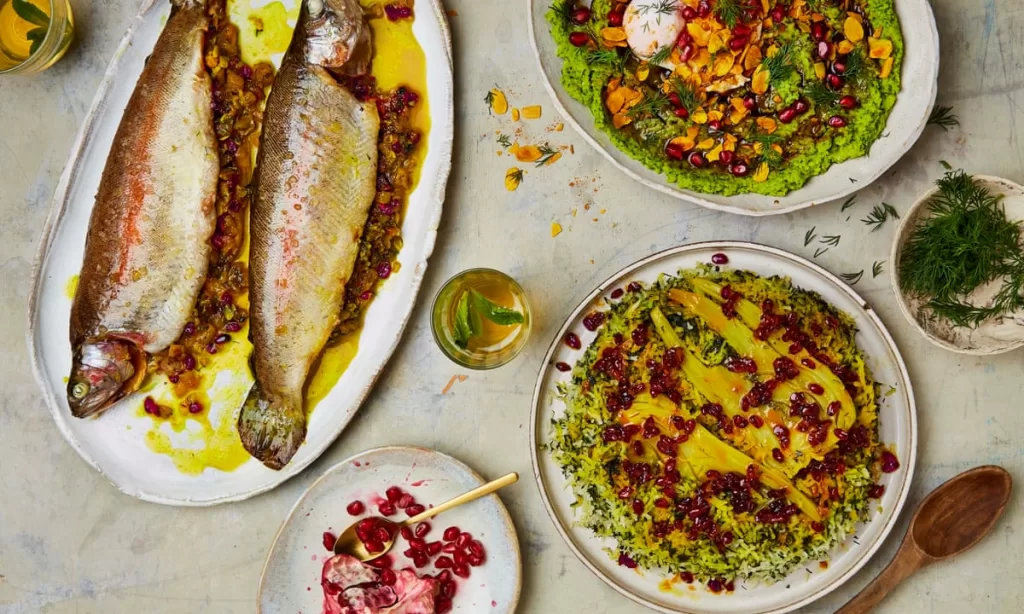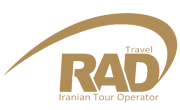The Power of Norouz: A Persian New Year that Inspires Unity and Gratitude
Norouz (also called Nowruz), which means “new day” in Persian, is one of the most significant and widely celebrated holidays in Iranian culture. It marks the beginning of the Persian new year and for many Iranians, it is a time for renewal, reflection, and reconnection with loved ones. Norouz has a rich history that dates back thousands of years and is deeply rooted in Zoroastrian traditions. Today, it is celebrated not only by Iranians but also by many other cultures around the world.
The Significance of Norouz in Iranian Culture
History and Origins of Norouz
Norouz has a rich history that dates back thousands of years. The celebration of Norouz is deeply rooted in Zoroastrian traditions, which are one of the oldest religions in the world. According to Zoroastrian beliefs, the universe is in constant battle between good and evil, with light ultimately triumphing over darkness. The arrival of spring symbolizes the victory of light over darkness and the beginning of a new cycle of life.
Over time, Norouz evolved and became intertwined with various cultural practices and traditions. It also served as an opportunity for people to come together, celebrate the new year, and honor their ancestors. Throughout history, Norouz has been celebrated by Iranians from all walks of life, regardless of their religious or cultural background. Today, it remains one of the most significant holidays in Iranian culture and continues to be celebrated with great enthusiasm and joy.
Symbolism and Meaning of Norouz
Norouz is deeply symbolic and holds great meaning for many Iranians. It is a celebration of renewal, rebirth, and the arrival of spring. The Haft Seen table, which is traditionally decorated with seven items starting with the Persian letter “sin,” represents seven elements of life and nature. These items include Sabzeh (wheat or lentil sprouts), Samanu (sweet pudding made from wheat germ), Senjed (dried fruit of the oleaster tree), Seer (garlic), Seeb (apple), Somagh (sumac), and Serkeh (vinegar). Each item on the table holds its own significance and symbolism.

In addition to the Haft Seen table, another important tradition associated with Norouz is spring cleaning or “khouneh tekouni.” This practice involves thoroughly cleaning the house before the start of the new year, which symbolizes the cleansing of the soul and letting go of any negative energies from the past year. Many Iranians also choose to buy new clothes, visit friends and family, and exchange gifts during Norouz, further emphasizing the themes of renewal and connection.
Customs and Traditions During Nowruz
Norouz is celebrated in various ways across Iran and by Iranians living in different parts of the world. One of the most significant traditions associated with Norouz is the preparation of the Haft Seen table. Families spend days preparing the table, which includes a variety of items such as flowers, candles, coins, and sweets. Another tradition associated with Norouz is the practice of visiting friends and family, which is known as “didani.” During these visits, people exchange gifts and sweets, and share traditional foods and drinks.
Another important custom associated with Norouz is “chaharshanbe soori,” which is the fire-jumping festival that takes place on the eve of the last Wednesday before Norouz. During this festival, people light bonfires and jump over them to symbolize the purification of the soul and the arrival of spring. In addition, many Iranians also celebrate Sizdah Bedar, which is the thirteenth day of Norouz and involves spending time outdoors, having picnics, and throwing away the Sabzeh sprouts from the Haft Seen table.
Religious Significance of Norouz Holiday
Norouz has strong religious roots in Zoroastrianism, which is an ancient Persian religion. It is believed that the celebration of Norouz was used to align the Zoroastrian calendar with the solar year. Today, Norouz is celebrated by people of all faiths in Iran and is a symbol of national unity and cultural pride. For Zoroastrians, Norouz represents the triumph of light over darkness and the renewal of nature.
Nowruz and Iranian Identity
Norouz plays a vital role in shaping and defining Iranian identity and culture. It is a time when Iranians come together to celebrate their shared heritage and values. Norouz represents hope, renewal, and the promise of a new beginning, and for many Iranians, it is a reminder of their resilience and strength in the face of adversity. Despite its long history, Norouz continues to evolve and adapt to modern times, reflecting the changing needs and aspirations of Iranian society. The celebration of Norouz has become an integral part of Iranian culture and identity, and remains a significant source of pride and joy for Iranians around the world.
Regional Variations of Norouz in Iran
Despite being celebrated across Iran, Norouz traditions and customs can vary significantly depending on the region. Each city has its unique way of celebrating the holiday and its own distinct set of customs and traditions.
Norouz Traditions in Tehran
Tehran, the capital city of Iran, has its unique way of celebrating Nowruz. One of the most significant traditions in Tehran is the Chaharshanbe Souri festival, which takes place on the eve of the last Wednesday before Norouz. During this festival, people light bonfires and jump over them to symbolize the purification of the soul and the arrival of spring. Another tradition in Tehran is the practice of “tekkeh,” which involves visiting holy shrines and attending religious ceremonies.
Norouz Celebrations in Shiraz
Shiraz is known for its vibrant and colorful Norouz celebrations. One of the most significant traditions in Shiraz is the “Ghashogh Zani” ceremony, which involves the banging of pots and pans to ward off evil spirits. Another important tradition in Shiraz is the “Sizdah Bedar” festival, in which people spend time outdoors, having picnics and enjoying nature.
Norouz Customs in Isfahan
Isfahan, located in central Iran, is renowned for its beautiful architecture and stunning gardens. One of the most significant customs in Isfahan is the “Charshanbeh Soori” festival, in which people light bonfires and jump over them. Another important tradition in Isfahan is the practice of “samanu,” a sweet pudding made from wheat germ, which is an essential part of the Haft Seen table.
Norouz Outside of Iran
Nowruz is not only celebrated in Iran but also by many other cultures around the world. In different regions, the traditions and customs associated with Norouz may vary, but the underlying themes of renewal and connection remain the same.
Norouz Traditions in Afghanistan
In Afghanistan, Norouz is known as “Nawroz” and is a national holiday. One of the most important traditions in Afghanistan is the act of kite-flying, which symbolizes freedom and hope. Another significant custom is the practice of “Haft Mewa,” which involves preparing a dish with seven dried fruits and nuts.
Norouz Celebrations in Central Asia
In Central Asia, Norouz is celebrated under different names, such as “Navruz,” “Nowruz,” or “Nauryz.” One of the most significant customs in Central Asia is the “Sumalak” ceremony, in which people prepare a sweet pudding made from germinated wheat. Another important tradition is the “Kokpar” game, which involves horseback riders competing to grab a goat carcass.
Norouz Festivities in the Diaspora
Norouz is also celebrated by Iranians living in the diaspora, many of whom have adapted their traditions to fit their new environments. In the United States, for example, Norouz celebrations often involve cultural performances, exhibitions of art and literature, and traditional food and drink.

Norouz and Modern Times
Despite its rich history and cultural significance, Norouz faces various challenges in modern times, including globalization, social media, and political turmoil.
Challenges to Norouz Celebrations in Contemporary Iran
In recent years, the Iranian government has implemented restrictions on Norouz celebrations, citing religious and cultural concerns. The rise of fundamentalism and political unrest in Iran has also had an impact on Nowruz celebrations and traditions.
Norouz and Globalization
Globalization has brought about changes in the way Norouz is celebrated across the world. With the spread of information technology and the internet, Norouz has become more accessible to people from different cultures and backgrounds.
Norouz in the Age of Social Media
Social media has also played a significant role in shaping Norouz celebrations in modern times. Many Iranians use social media platforms such as Instagram and Twitter to share images, videos, and messages related to Norouz, further emphasizing the themes of renewal and connection.
Norouz Traditions and Superstitions in Iran
Ancient Zoroastrian Influences on Norouz
Norouz has deep roots in the Zoroastrian religion, and many of its traditions and customs are influenced by ancient Zoroastrian practices. For example, the practice of spring cleaning and the use of fire in purification rituals are both believed to be symbolic of the Zoroastrian belief in the triumph of light over darkness.
Superstitions and Beliefs Surrounding Norouz in Iran
There are many superstitions and beliefs surrounding Norouz in Iran. For example, it is believed that whatever a person does or eats during Norouz will have an impact on their fortunes for the rest of the year. It is also believed that one should not sweep the house during Norouz, as it may sweep away good luck.
Norouz Rituals and Ceremonies in Iranian Villages
In many rural areas of Iran, Norouz is celebrated with unique rituals and ceremonies. One such ceremony is “Sizdah Bedar,” which involves spending time outdoors, having picnics, and throwing away the Sabzeh sprouts from the Haft Seen table. Another tradition in rural areas is the “Ghazal Giri” ritual, in which people recite poetry and sing songs in honor of Norouz.
Norouz Foods and Recipes
Persian New Year Dishes and Recipes
Norouz is a time when Iranians come together to share traditional foods and recipes. One of the most popular dishes during Norouz is “sabzi polo mahi,” which is a herbed rice dish served with fish. Other popular dishes include “kookoo sabzi,” a type of herb frittata, and “ash reshteh,” a thick soup made with beans, herbs, and noodles.

Traditional Sweets and Desserts for Norouz
Sweets and desserts are an essential part of Nowruz celebrations in Iran. One of the most popular sweets is “sohan,” a type of brittle made with saffron, pistachios, and sugar. Another popular dessert is “shirini berenji,” a type of rice pudding flavored with rosewater and cardamom.
Norouz Drinks and Beverages in Iran
In addition to food, Norouz is also a time for Iranians to enjoy traditional drinks and beverages. One such drink is “sekanjabin,” which is a sweet and sour syrup made with vinegar and mint. Another popular beverage is “sharbat,” a refreshing drink made with fruit juice, water, and sugar. Tea is also an essential part of Norouz celebrations in Iran, often served with sweets and pastries.
FAQs about Nowruz
- What is Norouz?
Norouz, also known as Persian New Year, is a celebration of the start of spring and the beginning of the new year in the Iranian calendar. - When is Norouz celebrated?
Norouz is celebrated on the vernal equinox, which usually falls on March 20th or 21st. - How long does Norouz last?
Norouz celebrations typically last for 13 days, ending on the 13th day of the new year, which is called Sizdah Bedar. - What are some traditional Norouz customs?
Some traditional Norouz customs include spring cleaning, decorating the house with flowers, visiting friends and family, and eating symbolic foods like sabzi polo (herbed rice) and reshteh polo (noodle rice). - What is the Haft-Seen table?
The Haft-Seen table is a key part of Norouz celebrations. It is a table that is decorated with seven items all starting with the Persian letter “sin” (س), which symbolize different hopes and wishes for the new year. - Is Norouz only celebrated in Iran?
No, Norouz is also celebrated in other countries that share the Persian heritage, such as Afghanistan, Azerbaijan, Kazakhstan, and Tajikistan. - Is Norouz a religious holiday?
While Norouz has its roots in Zoroastrianism, it is now celebrated by people of different religions and backgrounds in Iran and beyond. - What is the significance of the Norouz festival?
Norouz is a time to celebrate renewal, hope, and the triumph of light over darkness. It is a time to reflect on the past year and set intentions for the year ahead. - What types of gifts are exchanged during Norouz?
During Norouz, it is customary to exchange gifts with friends and family. Common gifts include flowers, sweets, and coins. - What are some modern-day Norouz traditions?
Modern-day Norouz traditions include watching the annual Norouz fireworks in Tehran, attending Norouz concerts, and sending Norouz greeting cards to loved ones.

